| GEMELOS
DE ÉLITE: Joe and Dave Tanner,
UN ASTRONAUTA Y UN DEPORTISTA POLIFACÉTICO
September
2006
Man proud of astronaut twin
Joe Tanner's fourth trip into
space is his last; brother Dave
Tanner watches from
Bloomington home
by Dann Denny
331-4350 | denny@heraldt.com
September 14, 2006
|
|
In 1969, Dave and Joe Tanner were huddled
in Dave's Bloomington apartment, watching
the grainy images of the historic moon landing
on a tiny black-and-white TV.
"We just sat there and watched in silence, but
we both were thinking how great it would be
to become an astronaut some day," he said.
"Identical twins know what each other is
thinking."
Dave's intuitive powers were dead on. For
many years, Joe did indeed harbor a dream of
one day soaring in space.
In 1980, Joe became a NASA pilot. Over the
next eight years, he applied three times to
become an astronaut. Three times he was
turned down.
"But he wouldn't give up," said Dave, a
mountain-climbing triathlete who now coaches
the boys' swim team at Bloomington High
School North. "In 1992, at age 42, he became
the oldest astronaut ever selected." |
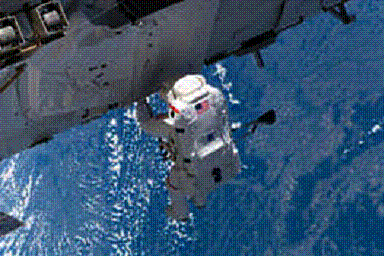
This image provided by NASA Tuesday shows Joe
Tanner, mission specialist, moving along the outside
of the International Space Station to install a truss
during the first of three scheduled spacewalks.
Tanner’s twin brother, Dave Tanner, lives in
Bloomington. NASA | Associated Press |
The mission
This week, Joe is enjoying his fourth - and final - space mission.
He's one of the six crew members aboard the space shuttle Atlantis, adding a massive solar array to
the international space station.
"The solar array is about the size of a football field," said Dave. "It collects energy from the sun to
generate electricity for the space station."
Dave said Joe, who's in charge of the crew's "extra-vehicular activity," knows what he's doing.
"He put the first solar array on the space station in 2000," he said. "NASA plans to put two more solar
arrays on during future missions, and Joe will train the astronauts who'll be doing that."
|
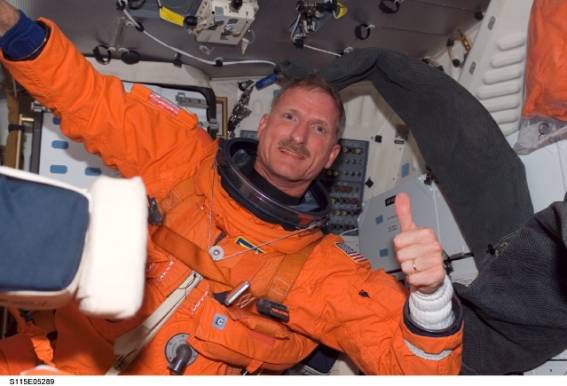
|
Underwater training
Dave said Joe and the other crew members trained 4 1/2 years for this mission, mostly in an
underwater buoyancy lab in Houston that simulates the weightlessness of space. underwater buoyancy lab in Houston that simulates the weightlessness of space.
"The underwater lab is 200 feet long and 40 feet deep," Dave said. "It's a model of the actual space
station."
Dave said Joe and the crew have rehearsed ad nauseam every move they now are making in space.
"Everything they do, down to every bolt they install, is precisely choreographed," he said. "Nothing is
left to chance." |
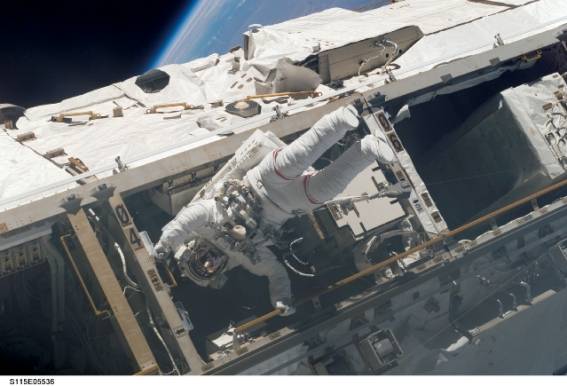 |
Proud and afraid
Dave was in Cape Canaveral last week to witness Atlantis' takeoff, just as he has for each of Joe's
previous three missions - in 1994, 1997 and 2000.
Dave and about 40 of Joe's relatives and friends watched the launch from a complex about three miles
west of the launch pad.
"I always watch his launches with equal parts pride, love and fear for his safety," Dave said. "If you're
not a little bit afraid, then you don't understand how dangerous these missions are."
|
Just before Joe boarded the shuttle, Dave handed him a card. It said "Find strength and feel peace."
"Then I wrote some stuff that I hoped would give him the confidence to do what he needed to do," he
said. "He knows that if you make a mistake up there, it could be your last."
Like many identical twins, Dave and Joe are eerily close. But Dave also has a respect for his brother
than runs deep.
"In our more than 56 years of life, we've never had a disagreement, because he's always right." Dave
said. "When I grow up, I want to be just like him."
|
Takeoff 'thrilling'
Dave said watching a space shuttle launch in person is thrilling.
"The first thing you see is the flash from the engines, followed by billowing smoke," he said. "Most of
that is water vapor, because they dump water on the launch pad to keep it from overheating."
He said the shuttle sits on the pad for several seconds as it's gradually enveloped by a shroud of
vapor. Then, slowly, it begins to ascend.
"You can feel vibrations as it's going up," he said. "The sound waves literally hit your chest."
He said within seconds, the shuttle is nothing more than a white light in the sky.
"It happens so fast," he said. "You wish you could slow it down to enjoy it longer, but you can't."
advertise here
Joe has told Dave that floating in space feels like being underwater.
"And he says the view of Earth is breathtaking, almost too awesome for words," he said. |
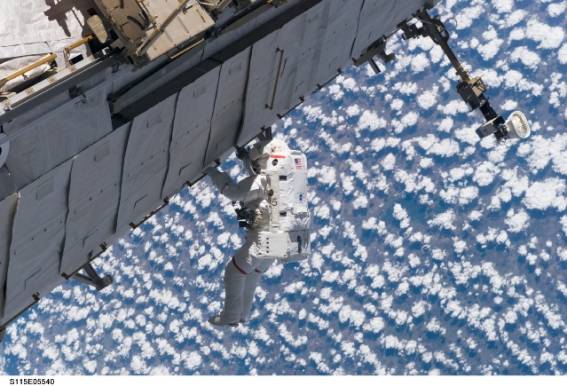 |
The landing
Though Atlantis is scheduled to return to earth Wednesday, Dave thinks the mission may be extended
a day or two.
"Regardless of when it lands, I will be there," he said. "There are certain things that are important in
life and certain things that are not. There's no way I would miss it."
After Atlantis touches down, Dave will have to wait eight hours before wrapping Joe in a brotherly
bear hug.
"The entire crew has to immediately undergo physiological testing," he said. "They're doing a lot of
studies on the crew, one of which deals with how well they slept in space."
Dave knows from experience that his twin will be taller than him, at least for a while.
"He always grows a couple inches in space, so he'll be 6-foot-4," he said. "But a couple hours later,
he'll shrink to 6-2."
Now nearly 57 years old, Joe Tanner will undertake no more space missions for NASA.
"The shuttle program will end by 2010, and NASA wants to give some of the other astronauts a chance
to go on a mission," he said. "I understand, but it's kind of sad knowing this is the last time I'll see Joe
in space." |
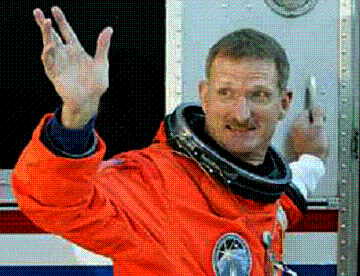
Mission Specialist Joe Tanner waves as he
exits the Operations and Checkout Building at
the Kennedy Space Center in Cape Canaveral,
Fla., Saturday. Terry Renna | Associated
Press |
|
|
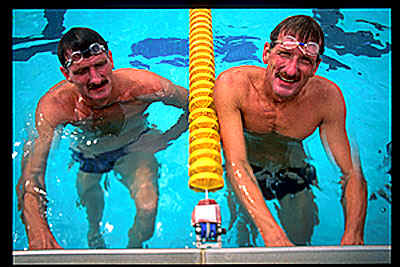 |
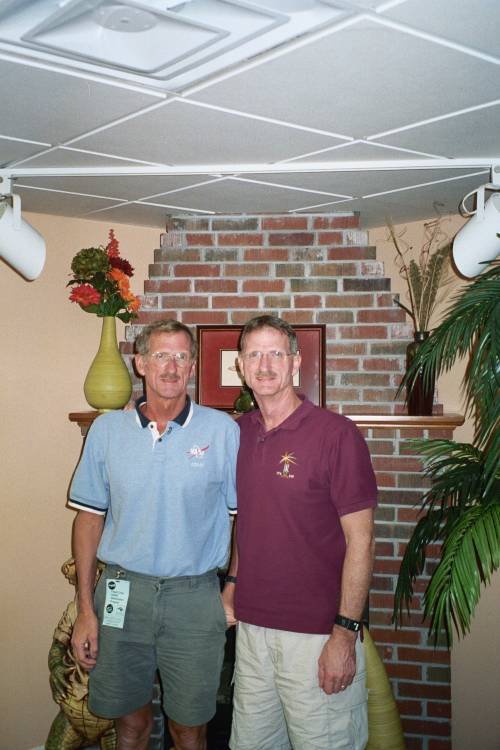 |
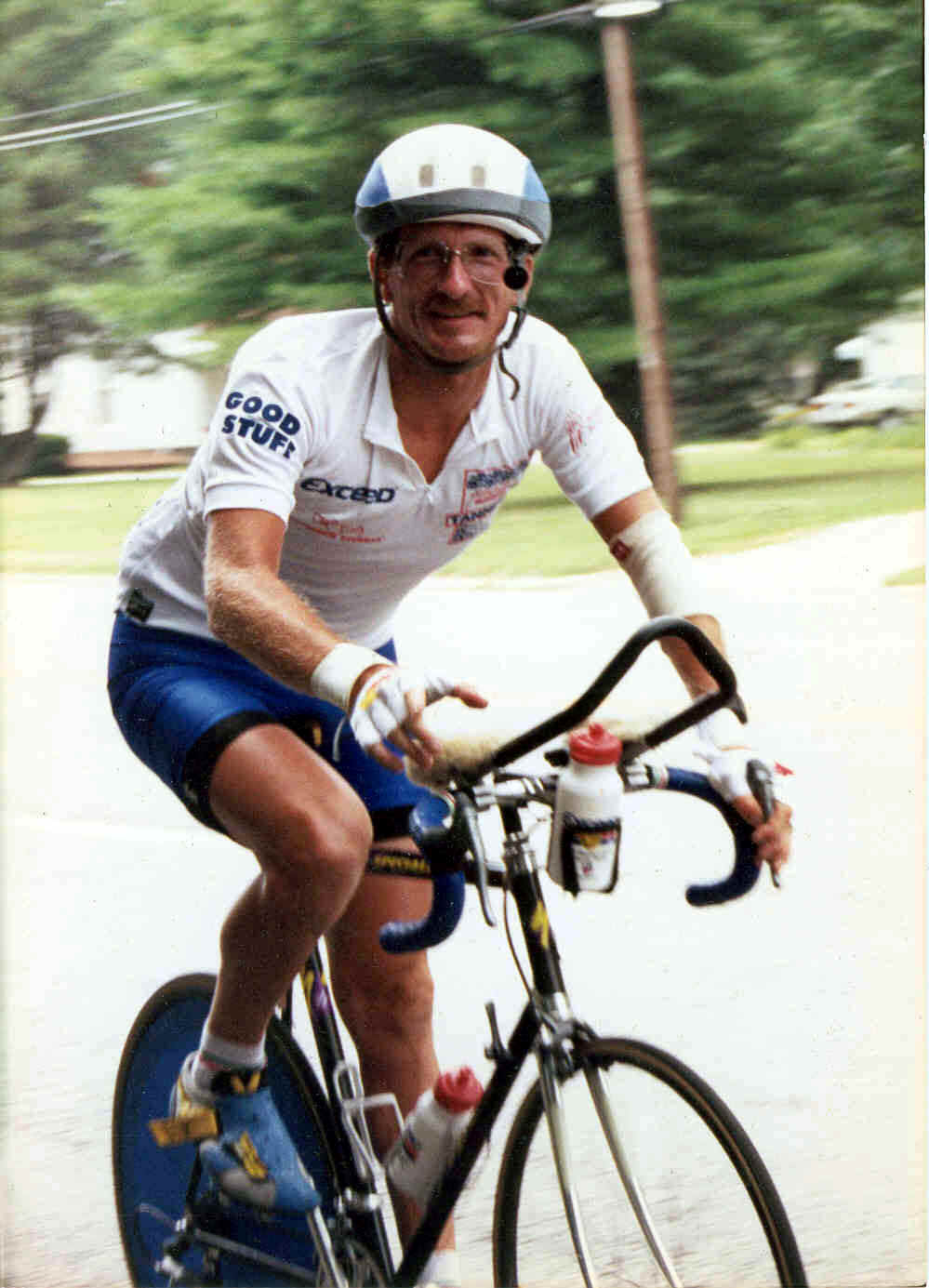
Dave Tanner in the Race Across America - 1989 |
JOE
TANNER
http://www.jsc.nasa.gov/Bios/htmlbios/tanner.html
DAVE
TANNER
http://www.sportphysiology.com
http://www.exercisephysiology.net
|
|
|
|
|
|